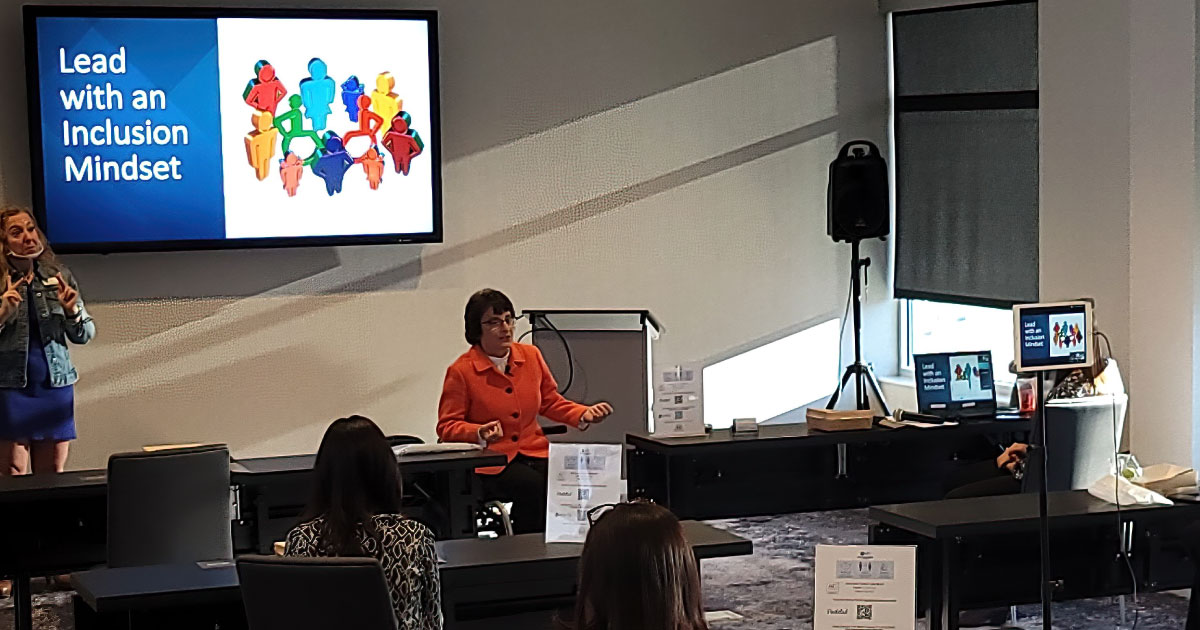In celebration of the United Nations’ International Day of Persons with Disabilities on December 3, here are tips and information to help meeting professionals plan inclusive meetings and events.
In light of the pandemic, most meetings are virtual or hybrids. Meeting professionals have seen attendance increase for virtual meetings because attendees prefer to stay in their homes safe from harm due to COVID-19. People with disabilities especially benefit from having the ability to attend virtual meetings at home rather than putting in the extra effort to attend in-person meetings.
Meeting professionals must accommodate the needs of people with disabilities. Here are tips for inclusive virtual meetings.
Create events that are welcoming to everyone. Join our December 3rd Inclusive Event Strategist Class. Register Here!
-
When people register, there should be a question for them to answer to indicate their need for special accommodations due to a disability.
-
Ask for any special accommodations to be communicated at least two weeks in advance of the meeting.
-
People with visual impairments, blindness, deafness or hearing impairments may need special accommodations.
-
Those needing special accommodations should be contacted by phone and/or email to find out their requests.
-
The vendors that provide these accommodations should be identified to assist with their request.
-
Closed captioning should be a standard feature that is a benefit to all participants.
-
When handouts are a part of the meeting, ask those with visual disabilities in what format they would like them prepared and send them in advance of the meeting.
To make your hybrid and in-person events run more smoothly be mindful of the needs of people with a hearing disability. This is especially relevant for networking functions and registration at the event. Hearing-impaired people may need to read lips. It is difficult to read someone’s lips if a face mask conceals their lips. Face masks can be purchased with a clear view area so that a hearing-impaired person can see other people’s lips moving, thus enhancing the communication process.
It is also a good practice to ask the person with a hearing disability where they would like to sit. Accommodate their request so they are seated in front of the unmasked person speaking at the meeting. For a virtual meeting make sure the person who is speaking can be seen so that their lips can be read by the attendee.
If a sign language interpreter is needed by the attendee, position that interpreter on the stage next to the speaker. Make sure the camera for the virtual meeting is positioned to include the interpreter as well as the presenter and that they are visible to the attendees.
For people who have a visual disability, they will need the speaker to describe any visuals used in the presentation. Make sure the speaker is made aware of the need and explain that they should add a few more sentences when narrating their slides. If requested by the attendee, have the speaker send a copy of their slides to the attendee in advance of the meeting.
It is important to communicate and not assume what services or special accommodations people with disabilities need. For example, a person who wants to sit in the front row by the stage to accommodate their hearing disability may not request a sign language interpreter. A meeting planner who makes the assumption and hires a sign language interpreter is insulting the person with a disability by not listening to their request.
Accommodating people with disabilities is about taking care of people and treating them with dignity and respect so they can participate equally and feel fully included.
Register for our December 3rd Inclusive Event Strategist Class.







